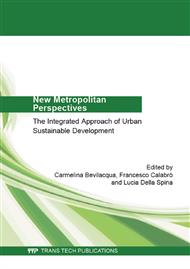[1]
J. Hartley: Creative Industries. In: John Hartley (ed. ): Creative Industries, Blackwell, (2005).
Google Scholar
[2]
D. Throsby: Economics and Culture, Cambridge University Press, (2001).
Google Scholar
[3]
D. De Natale and G. H. Wassall: The Creative Economy: A New Definition, New England Foundation for the Arts (2007).
Google Scholar
[4]
Information on http: /www. travelandleisure. com/articles.
Google Scholar
[5]
E. Moretti: The New Geography of Jobs, Houghton Mifflin Harcourt, (2012).
Google Scholar
[6]
R. Florida: The Rise of the Creative Class, Basic Books (2002).
Google Scholar
[7]
E. L. Glaeser: Entrepreneurship and the City, National Bureau of Economic Research Working Paper 13551, October, (2007).
Google Scholar
[8]
E. L. Glaeser: Triumph of the City, The Penguin Press, (2011).
Google Scholar
[9]
E. L. Glaseser, J. Kolko, and A. Saiz: Consumer City. In: Journal of Economic Geography, (2001), p.27.
Google Scholar
[10]
E. L. Glaseser, G. A. M. Ponzetto, and K. Tobio: Cities, Skills, and Regional Change, Regional Studies (2014), p.7.
Google Scholar
[11]
E. L. Glaseser, and M. G. Resseger: The Complementarity Between Cities and Skills. In: National Bureau of Economic Research Working Paper, 15103, June, (2009).
Google Scholar
[12]
Y. K. Kodrzycki and A. P. Muñoz: Economic Distress and Resurgence in U.S. Central Cities: Concepts, Causes, and Policy Levers. In: Federal Reserve Bank of Boston Public Policy Discussion Paper, 13-3, May (2013).
DOI: 10.2139/ssrn.2366547
Google Scholar
[13]
R. Maloney and G. H. Wassall: A Case Study in Cultural Economic Development: The Adams Grant Program in Massachusetts. In: Michael Rushton (ed. ): Creative Communities, Brookings Institution, (2013).
Google Scholar


